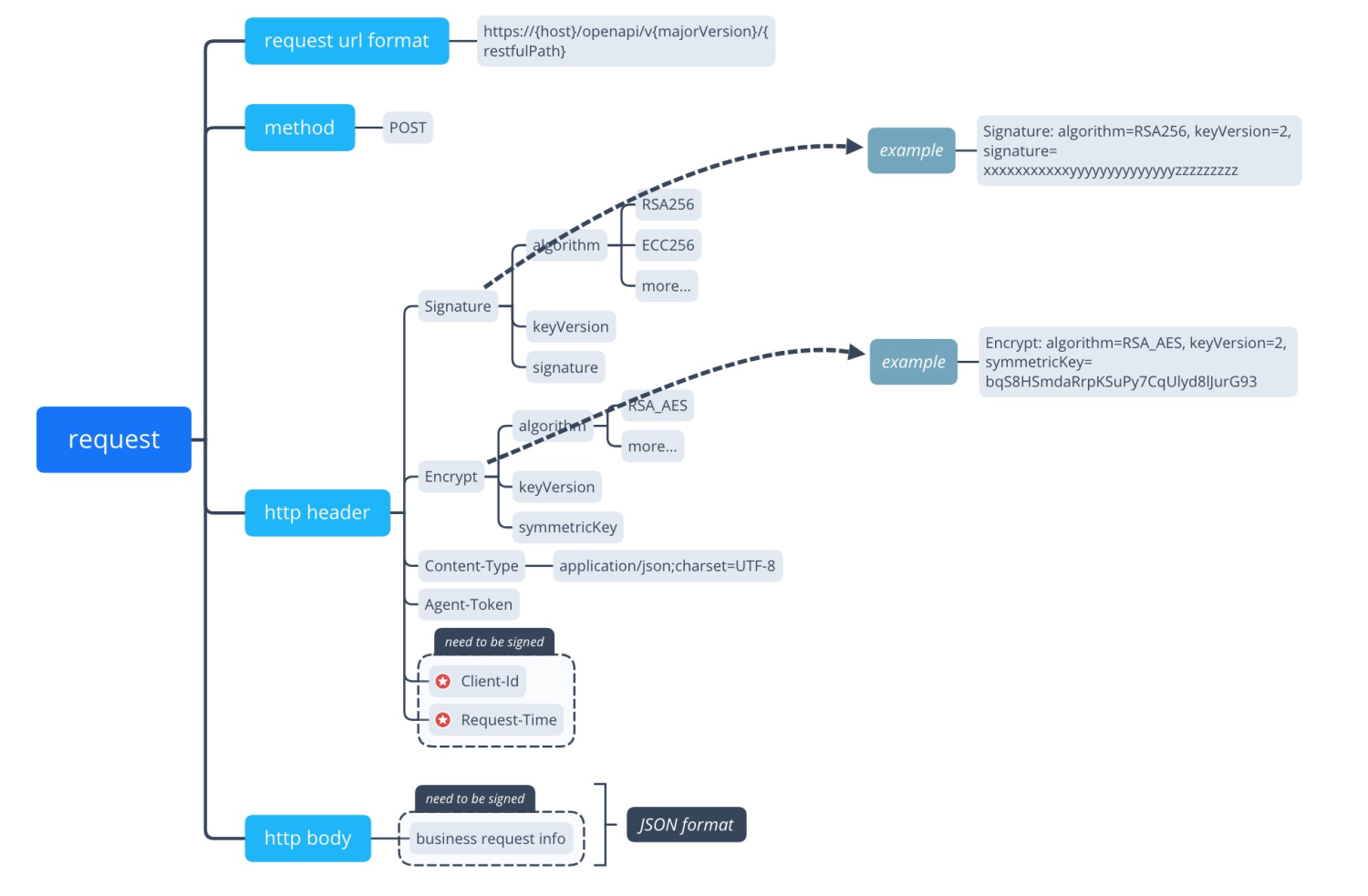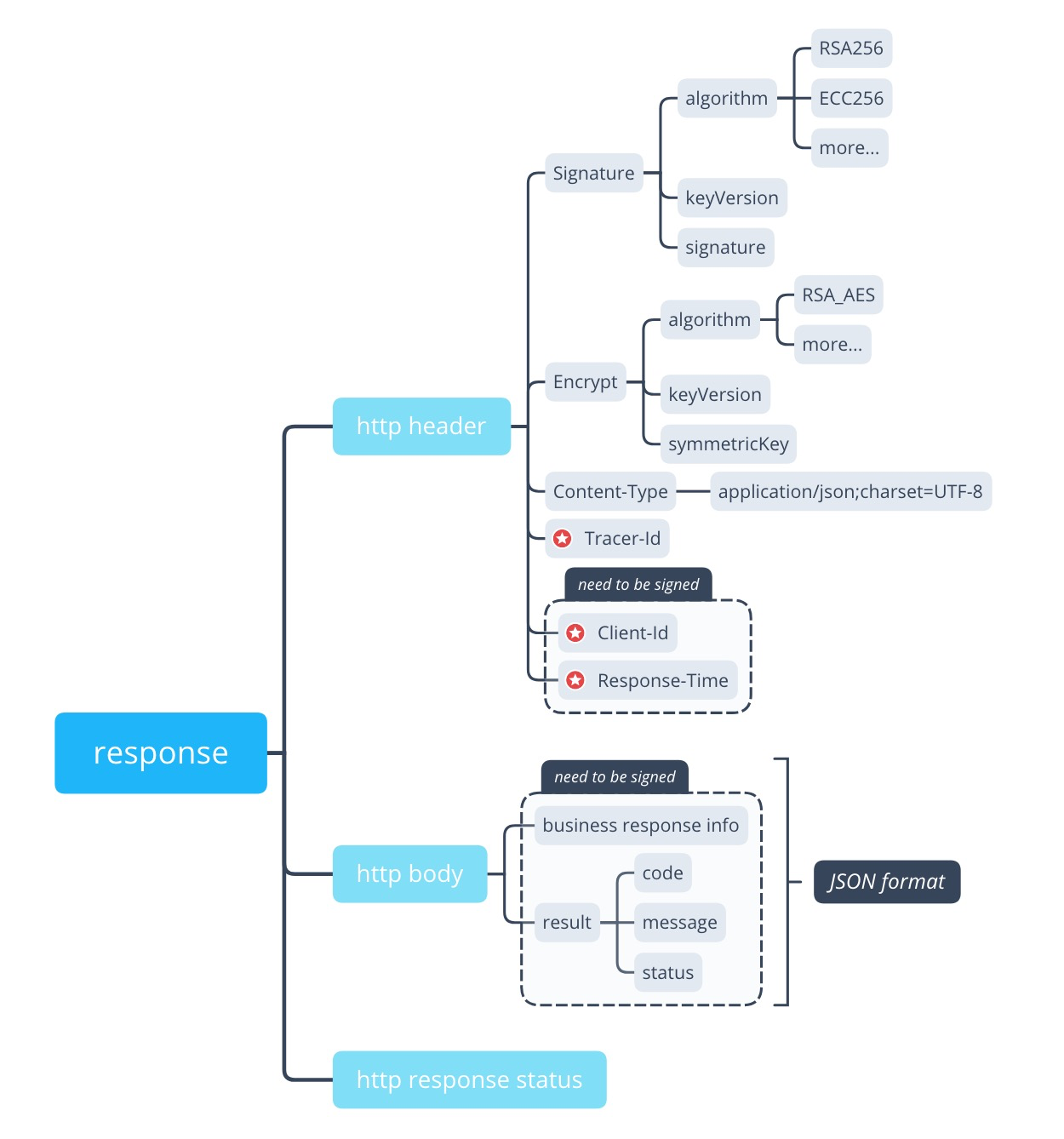API Structure
AlipayHK adopts API standards along with digital signature and data encryption, please check below information for the API structure.
1. Request

1.1 Basic Headers
General Headers
Below basic headers apply on both request and response, for headers information specific to request, please check the document of specific request.
Name | Description | Type | Sample |
Client-Id | An ID provided by AlipayHK, used to identify partner and application system. | String | 4Q5Y8W0WSG45P907917 |
Content-Type | The RFC 2616 media type of the request body, the charset should be as same as the one used for cryptographic operations. | String | application/json; charset=UTF-8 |
Signature | A key-value pairs string separated by commas (,), which keys and values are joined by equal signs (key=value). Valid keys include:
| String | algorithm=RSA256, keyVersion=1, signature=KEhXthj4bJ801Hqw8kaLvEKc0Rii8KsNUazw7kZgjxyGSPuOZ48058UVJUkkR21iD9JkHBGR rWiHPae8ZRPuBagh2H3qu7fxY5GxVDWayJUhUYkr9m%2FOW4UQVmXaQ9yn%2Fw2dCtzwAW0htPHYrKMyrT pMk%2BfDDmRflA%2FAMJhQ71yeyhufIA2PCJV8%2FCMOa46303A0WHhH0YPJ9%2FI0UeLVMWlJ1XcBo3Jr bRFvcowQwt0lP1XkoPmSLGpBevDE8%2FQ9WnxjPNDfrHnKgV2fp0hpMKVXNM%2BrLHNyMv3MkHg9iTMOD% 2FFYDAwSd%2B6%2FEOFo9UbdlKcmodJwjKlQoxZZIzmF8w%3D%3D |
Agent-Token | An authorized token of current client obtained with AlipayHK. | String | |
Encrypt | when message content contains sensitive information, please see specific API. A key-value pairs string separated by commas (,), which keys and values are joined by equal signs (key=value). Valid keys include:
| String | algorithm=RSA, keyVersion=1, symmetricKey=bqS8HSmdaRrpKSuPy7CqUlyd8lJurG93 |
Request-only Headers
Name | Description | Type | Sample |
Request-Time | The ISO-8601 datetime of this API request with timezone. | String | 2024-05-22T06:42:21+05:30 |
1.2 Basic Body
URL Encoding
For URL data, perform URL encoding first before transmitting.
Example:
Before | After |
https%3A%2F%2Fwww.merchant.com%2FauthorizationResult |
2. Response

2.1 Basic Headers
Please refer to the request basic headers for the general basic headers.
Response-only Headers
Name | Description | Type | Sample |
Response-Time | The ISO-8601 datetime of this API response with timezone. | String | 2024-05-22T06:42:21+05:30 |
Tracer-Id | An unique system id for tracing. | String | 645864f51556420636666454470556 |